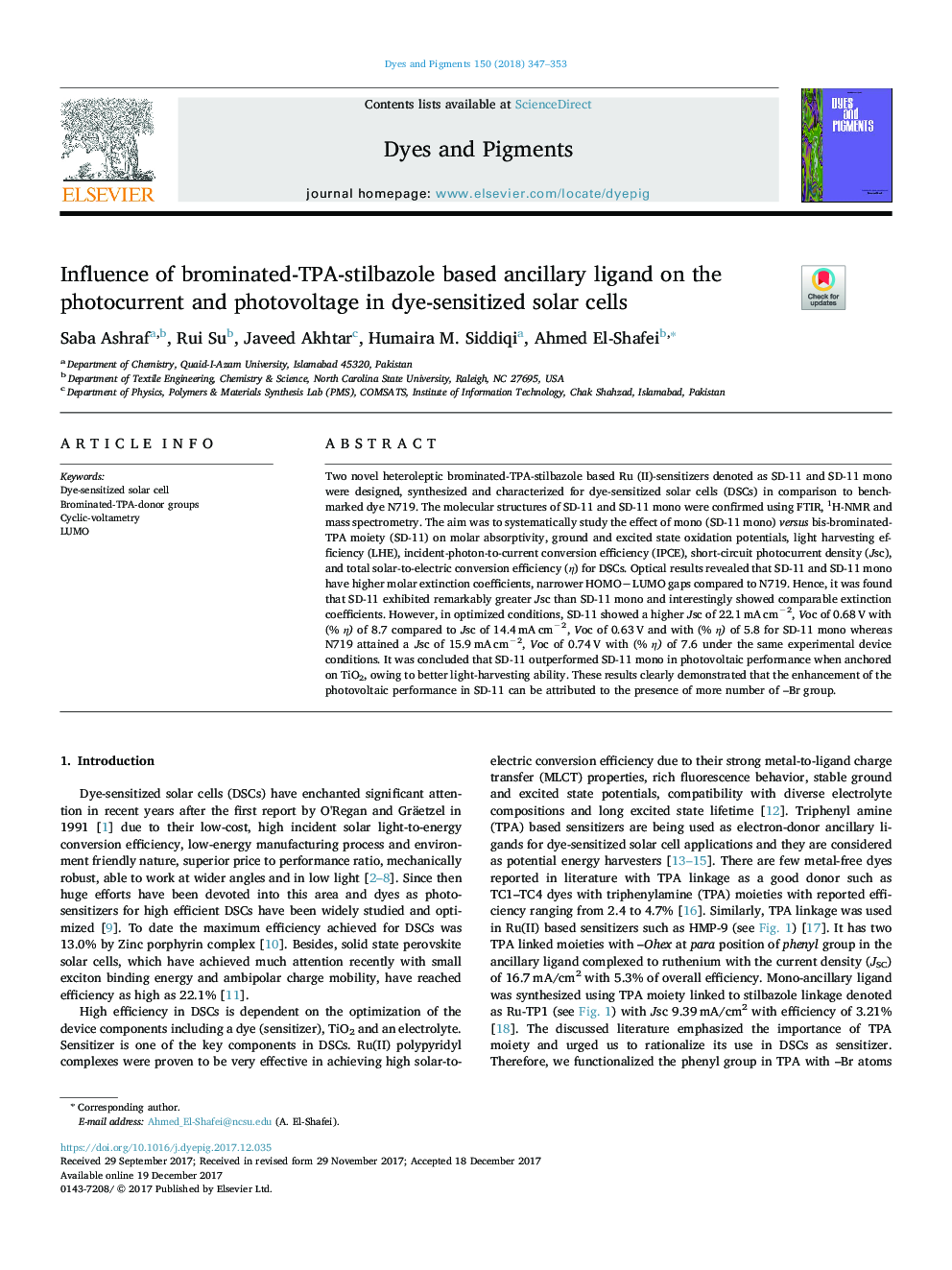| Article ID | Journal | Published Year | Pages | File Type |
|---|---|---|---|---|
| 6599372 | Dyes and Pigments | 2018 | 7 Pages |
Abstract
Two novel heteroleptic brominated-TPA-stilbazole based Ru (II)-sensitizers denoted as SD-11 and SD-11 mono were designed, synthesized and characterized for dye-sensitized solar cells (DSCs) in comparison to benchmarked dye N719. The molecular structures of SD-11 and SD-11 mono were confirmed using FTIR, 1H-NMR and mass spectrometry. The aim was to systematically study the effect of mono (SD-11 mono) versus bis-brominated-TPA moiety (SD-11) on molar absorptivity, ground and excited state oxidation potentials, light harvesting efficiency (LHE), incident-photon-to-current conversion efficiency (IPCE), short-circuit photocurrent density (Jsc), and total solar-to-electric conversion efficiency (η) for DSCs. Optical results revealed that SD-11 and SD-11 mono have higher molar extinction coefficients, narrower HOMOâLUMO gaps compared to N719. Hence, it was found that SD-11 exhibited remarkably greater Jsc than SD-11 mono and interestingly showed comparable extinction coefficients. However, in optimized conditions, SD-11 showed a higher Jsc of 22.1â¯mAâ¯cmâ2, Voc of 0.68â¯V with (% η) of 8.7 compared to Jsc of 14.4â¯mAâ¯cmâ2, Voc of 0.63â¯V and with (% η) of 5.8 for SD-11 mono whereas N719 attained a Jsc of 15.9â¯mAâ¯cmâ2, Voc of 0.74â¯V with (% η) of 7.6 under the same experimental device conditions. It was concluded that SD-11 outperformed SD-11 mono in photovoltaic performance when anchored on TiO2, owing to better light-harvesting ability. These results clearly demonstrated that the enhancement of the photovoltaic performance in SD-11 can be attributed to the presence of more number of -Br group.
Keywords
Related Topics
Physical Sciences and Engineering
Chemical Engineering
Chemical Engineering (General)
Authors
Saba Ashraf, Rui Su, Javeed Akhtar, Humaira M. Siddiqi, Ahmed El-Shafei,
